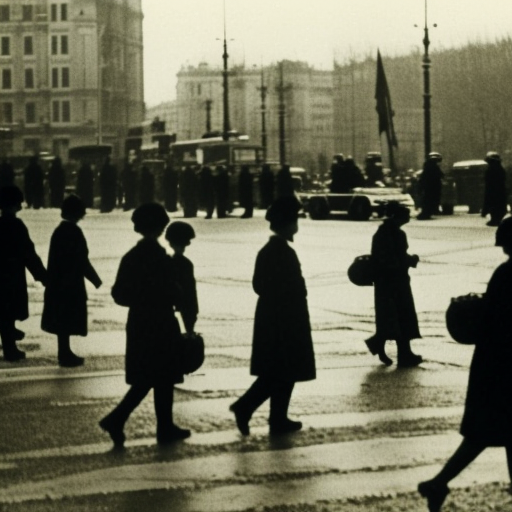Summary:
The October Revolution, also known as the Bolshevik Revolution, was a pivotal event in Russian history that took place in October 1917. It marked the overthrow of the Provisional Government and the establishment of Soviet power under the leadership of the Bolshevik Party. The revolution ultimately led to the creation of the Soviet Union and had far-reaching consequences for Russia and the world.
Background:
The October Revolution was the culmination of a series of events that began with the February Revolution earlier in 1917. The February Revolution resulted in the abdication of Tsar Nicholas II and the establishment of a Provisional Government. However, the Provisional Government faced numerous challenges, including the continuation of the war effort, economic instability, and social unrest.
Rise of the Bolsheviks:
The Bolshevik Party, led by Vladimir Lenin, emerged as a significant force during this period. The Bolsheviks advocated for the overthrow of the Provisional Government and the establishment of a socialist state. They gained support among workers, soldiers, and peasants by promising an end to the war, land redistribution, and workers’ control of factories.
October Revolution:
In October 1917, the Bolsheviks, with the support of the Petrograd Soviet, a council of workers and soldiers, launched a successful coup against the Provisional Government. On the night of October 25th, Bolshevik forces seized key government buildings and arrested members of the Provisional Government. The following day, the Second All-Russian Congress of Soviets, dominated by Bolshevik delegates, declared itself the supreme authority in Russia.
Consolidation of Power:
After the October Revolution, the Bolsheviks faced significant challenges in consolidating their power. They had to contend with opposition from other political groups, including the anti-Bolshevik forces known as the Whites. The Russian Civil War, which lasted from 1918 to 1922, ensued as various factions fought for control of the country.
Establishment of the Soviet Union:
Despite the challenges, the Bolsheviks emerged victorious in the civil war. In 1922, they established the Union of Soviet Socialist Republics (USSR), commonly known as the Soviet Union. The Soviet Union became the world’s first socialist state, with Lenin as its leader. The revolution brought about significant changes in Russian society, including the nationalization of industry, collectivization of agriculture, and the establishment of a planned economy.
Global Impact:
The October Revolution had a profound impact on the global stage. It inspired socialist and communist movements around the world and led to the establishment of communist states in various countries. The Soviet Union emerged as a superpower, challenging the dominance of capitalist nations and becoming a major player in international affairs.
Legacy:
The October Revolution had a lasting impact on Russian history. It shaped the political, economic, and social landscape of the country for decades to come. The Soviet Union’s policies and ideology influenced the lives of millions of people and had a significant impact on global politics during the 20th century. The revolution also sparked debates and discussions about the nature of revolution, socialism, and the role of the working class in society.












